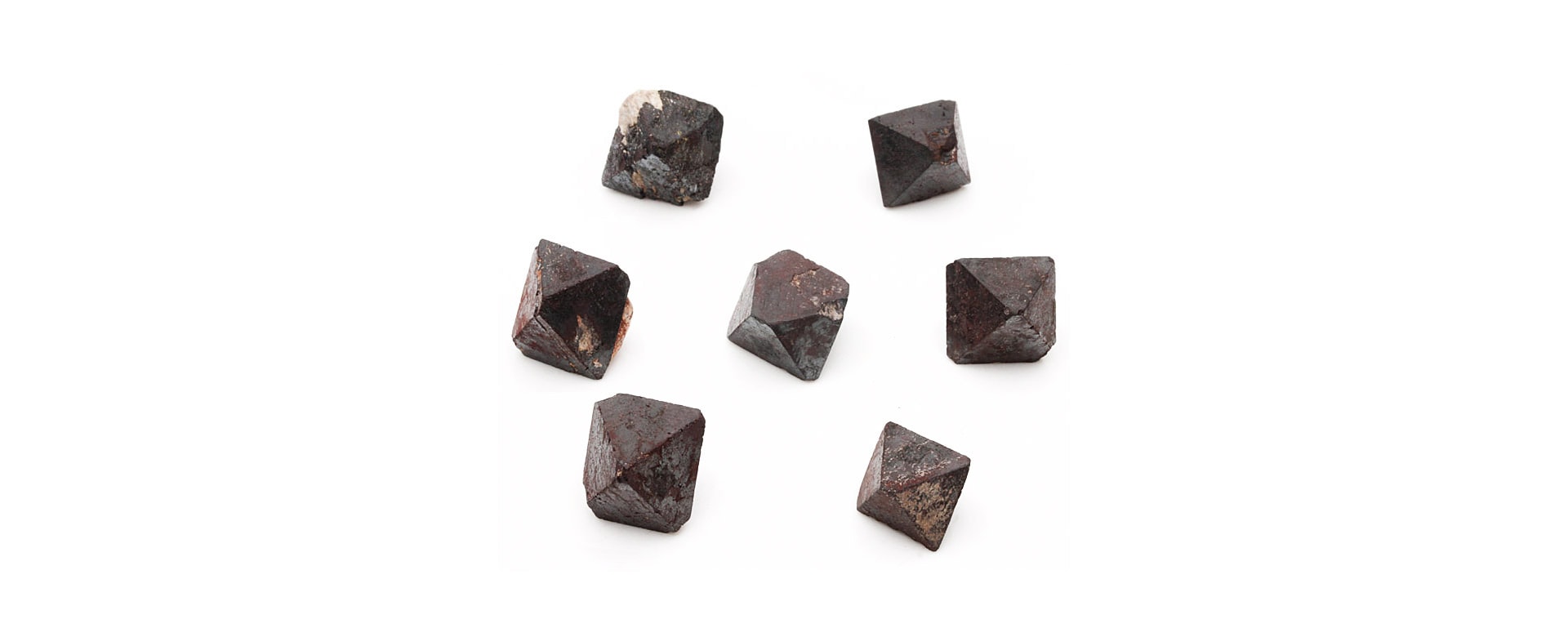Article Highlights
With its chemical formula of Fe3O4, this iron oxide mineral is more than a mere rock; it’s the cornerstone of our civilization’s development. Found abundantly in various types of rocks like igneous, metamorphic, and sedimentary, magnetite has an illustrious reputation as the most commonly mined ore of iron. Imagine, 72.4% of this stone is pure iron! It’s no wonder that this mineral is the backbone of industrial progress and modern infrastructure.
Identification of Magnetite

Have you ever wondered how to spot this magnetic marvel in the wild? Magnetite makes it easy for us! It’s one of the few minerals that respond to a common magnet.
This black, opaque gemstone isn’t just a pleasure to find but also to observe, with its submetallic to metallic luster and a Mohs hardness rating between 5 and 6.5. Often found in the form of isometric crystals, magnetite isn’t just a stone; it’s a magnetic mystery waiting to be unraveled.

But that’s not all. Ever heard of Pyrrhotite? It’s magnetite’s cousin in the magnetic world, known for its lower hardness and distinctive bronze color. These two, when found together, tell a story of the Earth’s geologic and magnetic history.
Lodestone Magnetite
Now, let’s talk about a special type of magnetite – the lodestone. This isn’t your ordinary magnetite. It’s naturally magnetized, with the extraordinary ability to attract small pieces of iron and other magnetic materials.
When you see a piece of lodestone, you’re looking at history itself. These stones served as the very first magnetic compasses, guiding ancient Chinese explorers as early as 300 BC. They’re not just rocks; they’re the remnants of humanity’s quest for direction and understanding of the Earth’s magnetic mysteries.
Magnetite Crystals

Imagine holding a piece of the Earth’s core in your hands. That’s what it feels like with magnetite crystals. These octahedral beauties are a common sight in igneous and metamorphic rocks and sometimes even in sediments close to their source. They’re not just stones; they’re geometric wonders that showcase the natural world’s complexity and beauty.
Magnetite as “Lodestone”
The story of magnetite is incomplete without mentioning its most magnetic form – “lodestone.” This isn’t just any mineral; it’s magnetite with a magnetic personality! It’s so magnetic that it doesn’t just follow a magnet; it attracts metal and other magnetic objects. Lodestone is nature’s own magnet, and finding one is like discovering a natural wonder.
Lodestones are more than just rocks; they are the ancient GPS systems. They were humanity’s first step towards understanding and utilizing the Earth’s magnetic field. Just imagine: a small piece of lodestone, when suspended, will align itself with the Earth’s magnetic field. This isn’t just a stone; it’s a natural compass, a guide that has led explorers and travelers for centuries.
Physical and Chemical Properties of Magnetite

Diving into the realm of magnetite is like exploring a treasure trove of physical and chemical properties that make this mineral a true standout in the geological world. With its deep black to silvery gray color and metallic to submetallic luster, magnetite doesn’t just catch the eye—it captivates the mind. But what truly sets it apart is its magnetic personality.
Magnetite is the most strongly magnetic mineral found in nature, making it an object of fascination and study for centuries.
Diagnostic Properties

Imagine having a set of characteristics so distinctive that they instantly reveal your identity. That’s the case with magnetite. Its strong magnetic nature, coupled with its specific color and black streak, makes it unmistakable. But the real showstopper is its octahedral crystal form, a geometric marvel that not only delights the eye but also tells a story of the mineral’s formation and growth. These diagnostic properties aren’t just identifiers; they’re the signatures of nature’s artistry.
Chemical Composition and Crystal System
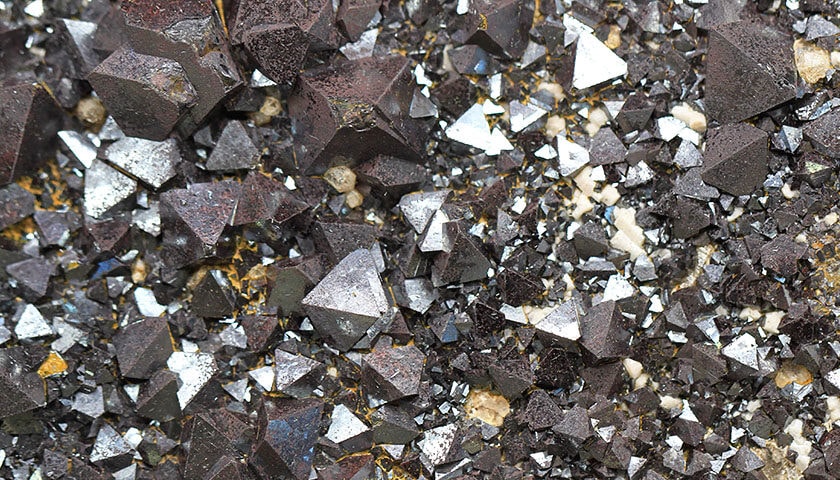
At its core, magnetite is Fe3O4, a simple yet elegant formula that speaks volumes about its composition and capabilities. This mineral crystallizes in the isometric system, forming crystals that are as symmetrical as they are striking. But magnetite isn’t just about looks; it’s a heavyweight in the mineral world, with a specific gravity of 5.2, reflecting its dense and substantial nature.
The Most Important Ore of Iron
Magnetite’s role extends far beyond its beauty and magnetic appeal. It’s the most important ore of iron, the very material that fuels our modern world. From the heavy media separation processes that clean coal to the production of steel that builds our cities, magnetite is at the heart of industrial progress. Its utility in studying Earth’s magnetic field provides a window into the past, offering insights into plate tectonics and continental drift.
Use of Magnetite as an Ore of Iron
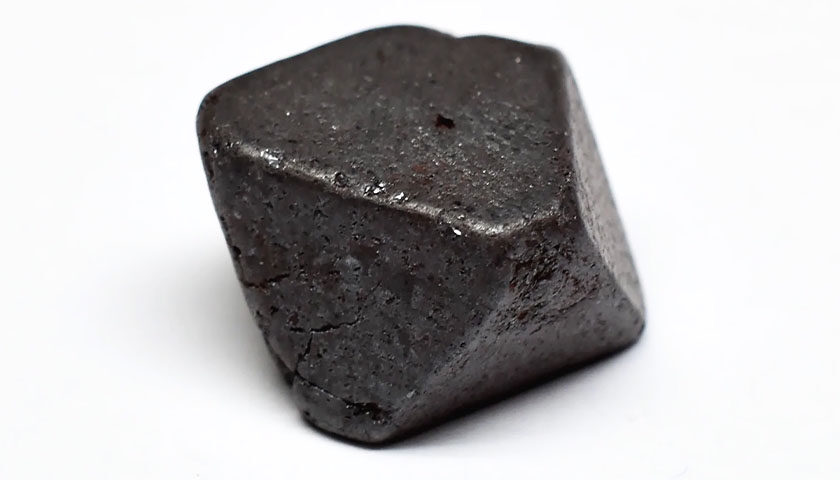
As the most important ore of iron, it stands at the forefront of industrial development, fueling the production of the steel that builds our modern world. Let’s delve into how this magnetic marvel is transformed from a common mineral into a foundational industrial resource.
Taconite and the Revolution of Iron Mining
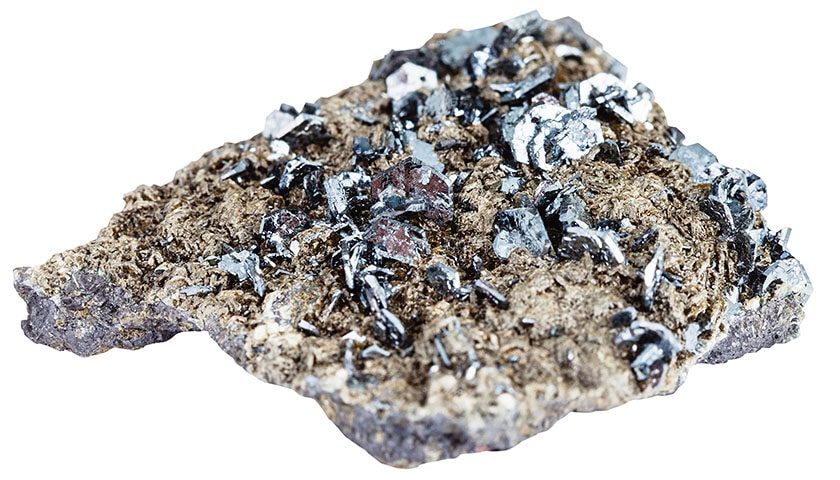
In the vast stretches of mining land, magnetite doesn’t always sit in the spotlight; it shares the stage with taconite, a banded sedimentary rock that’s a treasure trove of magnetite, hematite, and chert. This once-overlooked waste material is now a prized ore, especially after richer deposits have been depleted. Containing 25 to 30% iron by weight, taconite is a testament to magnetite’s enduring value.
From Powder to Pellets
The journey from raw ore to a usable form is a tale of innovation and engineering. The taconite ore undergoes a process of grinding, turning it into a fine powder. It’s then that magnetite’s magnetic properties come into play, allowing for the separation of iron-rich particles from the chert. The result is a concentrate that’s mixed with limestone and clay, rolled into small, transport-friendly pellets. These pellets are more than just clumps of iron; they’re the building blocks of skyscrapers, bridges, and vehicles, ready to be melted down and transformed into the steel that shapes our world.
Additional Uses of Magnetite
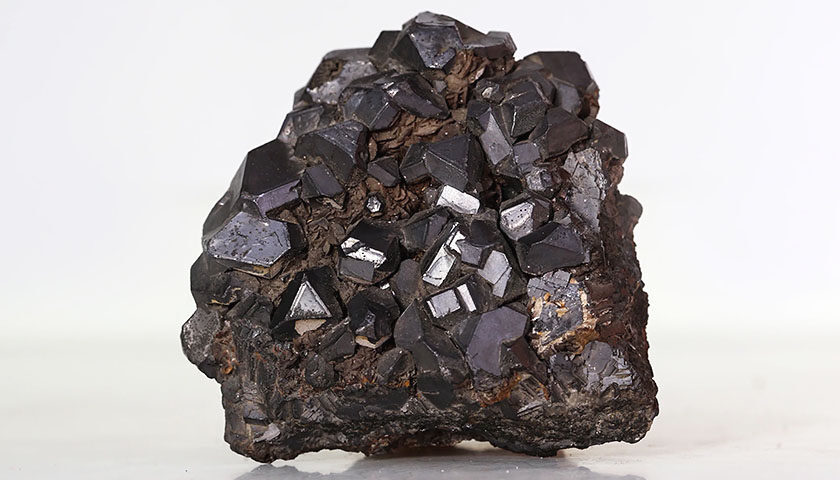
Magnetite’s versatility doesn’t end at the steel mill. This mineral has an array of uses that stretch across industries, making it a jack-of-all-trades in the mineral world.
As a Heavy Media
In the coal industry, magnetite plays a pivotal role in specific gravity separations. Imagine a thick, high-density slurry, where magnetite’s density becomes a tool for separating substances. It’s here that clean coal floats and impurities sink, a dance of buoyancy and gravity, all orchestrated by magnetite’s inherent properties.
Abrasives and Beyond
The story of magnetite’s utility weaves through the world of abrasives as “emery,” a natural mix of magnetite and corundum, and even into waterjet cutting, where finely ground magnetite acts as a cutting medium. But that’s not all. In electrophotography, as a micronutrient in fertilizers, a pigment in paints, and as an aggregate in high-density concrete, magnetite’s roles are as varied as they are vital.
Magnetite and Earth’s Magnetic Field
Embark on a journey into the invisible force of Earth’s magnetic field, where magnetite plays a critical and captivating role. This isn’t just a story of attraction; it’s a saga of scientific discovery and geological mystery.
Recording Earth’s Magnetic History
Within igneous and sedimentary rocks lie tiny crystals of magnetite, silent witnesses to the Earth’s magnetic field at the moment of their formation. These crystals, aligned with the magnetic field’s direction and polarity, are like natural compasses frozen in time, providing geologists with a snapshot of the past. The study of these magnetic properties opens a window to understanding continental drift, plate tectonics, and the very movement of the Earth itself.
Notable Worldwide Magnetite Deposits

Magnetite’s tale is global, with chapters written in every corner of the world. These deposits are not just geological features; they are the vaults of industrial and economic prosperity.
Kiruna, Sweden: A Giant Among Giants
In the northern reaches of Sweden lies Kiruna, a mining town synonymous with vast quantities of magnetite and hematite. The Kiruna mine isn’t just a hole in the ground; it’s a testament to human endeavor and natural bounty, a major supplier of high-quality iron ore to the steel industry.
A Worldwide Tour of Magnetite
From the Kursk Magnetic Anomaly in Russia to the Hamersley Basin in Australia, the Quadrilátero Ferrífero in Brazil, the Chilean Iron Belt, and beyond, each deposit has a story, a character, and a role in the global tapestry of mining and industry. These aren’t just points on a map; they’re the heartbeats of regional economies and the pillars of the global steel industry.
Biological Occurrences of Magnetite
Magnetite is not confined to the earth’s crust; it’s a phenomenon that transcends into the realm of biology, playing a pivotal role in the lives of various organisms. This mineral’s presence in nature’s living tapestry is a fascinating example of the interconnectedness of all things.
Magnetite in Magnetotactic Bacteria
In the microscopic world, magnetite forms an integral part of magnetotactic bacteria. These tiny navigators use magnetite to orient themselves with the Earth’s magnetic field, a natural compass for their aquatic journeys. Magnetosomes, the structures within these bacteria, contain chains of magnetite particles, guiding these organisms through their invisible paths.
Magnetoreception in Animals
Beyond bacteria, magnetite’s influence extends to higher organisms, including birds and certain types of mollusks. Birds, for example, incorporate magnetite crystals in their beaks, a tool for navigation across vast migrations. Chitons, a type of mollusk, use magnetite-coated teeth to grind down their food. These instances are not mere biological curiosities; they’re evidence of magnetite’s profound impact on life.
Magnetite in the Human Brain
Magnetite’s journey reaches its most complex destination within the human brain. This mineral, found in various brain regions, is a subject of intense research and fascination, offering a window into understanding ourselves and the potential impacts of our environment on our health.
Magnetite and Cognitive Function
In the human brain, magnetite exists alongside other forms of iron such as hemoglobin and ferritin. The hippocampus, a center for learning and memory, contains magnetite, suggesting a possible role in these critical cognitive processes. However, magnetite’s charge and magnetic nature also introduce the potential for toxic effects, particularly through oxidative stress and the production of free radicals.
Environmental Magnetite and Health
Recent research indicates that magnetite can enter the human brain from environmental sources, particularly air pollution. These nanoparticles, distinct from biogenic magnetite, may contribute to neurological diseases like Alzheimer’s. Understanding the difference between natural and anthropogenic magnetite in the brain is crucial for assessing potential health risks and the broader implications of our environmental impact.
Conclusion
Magnetite’s story is one of wonder, spanning the depths of the earth to the complexities of the human brain. It’s a mineral that has shaped our industrial landscape, provided insight into the ancient magnetic field of our planet, and even navigated the paths of living organisms. As we continue to study and understand magnetite, we uncover more about our world, our history, and ourselves.

